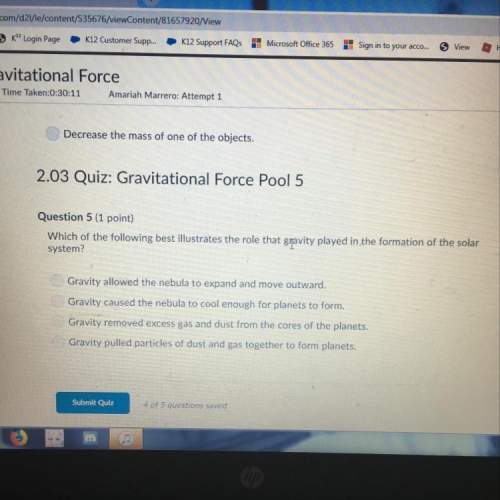
Chemistry, 30.01.2020 21:59 maelonramirez
An anthropologist finds there is so little carbon-14 remaining in a prehistoric bone that instruments cannot measure it. this means there is less than 0.2% of the amount of carbon-14 the bones would have contained when the person was alive. how long ago did the person die? (the constant for carbon-14 is 0.00012.)
answer
13,411 years
22,491 years
45,020 years
51,788 years

Answers: 3


Other questions on the subject: Chemistry

Chemistry, 22.06.2019 00:00, melidacampos12
Substance x has a fixed volume, and the attraction between its particles is strong .substance y had widely spread out particles and can be compressed what can most likely be concluded about these substances
Answers: 2

Chemistry, 22.06.2019 06:00, girly37
In 1901, thomas edison invented the nickel-iron battery. the following reaction takes place in the battery. fe(s) + 2 nio(oh)(s) + 2 h2o(l) fe(oh)2(s) + 2 ni(oh)2(aq) how many mole of fe(oh)2, is produced when 5.35 mol fe and 7.65 mol nio(oh) react?
Answers: 3

You know the right answer?
An anthropologist finds there is so little carbon-14 remaining in a prehistoric bone that instrument...
Questions in other subjects:

Mathematics, 28.04.2022 04:50

Mathematics, 28.04.2022 04:50






Mathematics, 28.04.2022 05:40







![\ln[0.002 N_o]=\ln[N_o]-{(0.00012 (year)^{-1})\times t](/tpl/images/0487/4057/8c67a.png)




